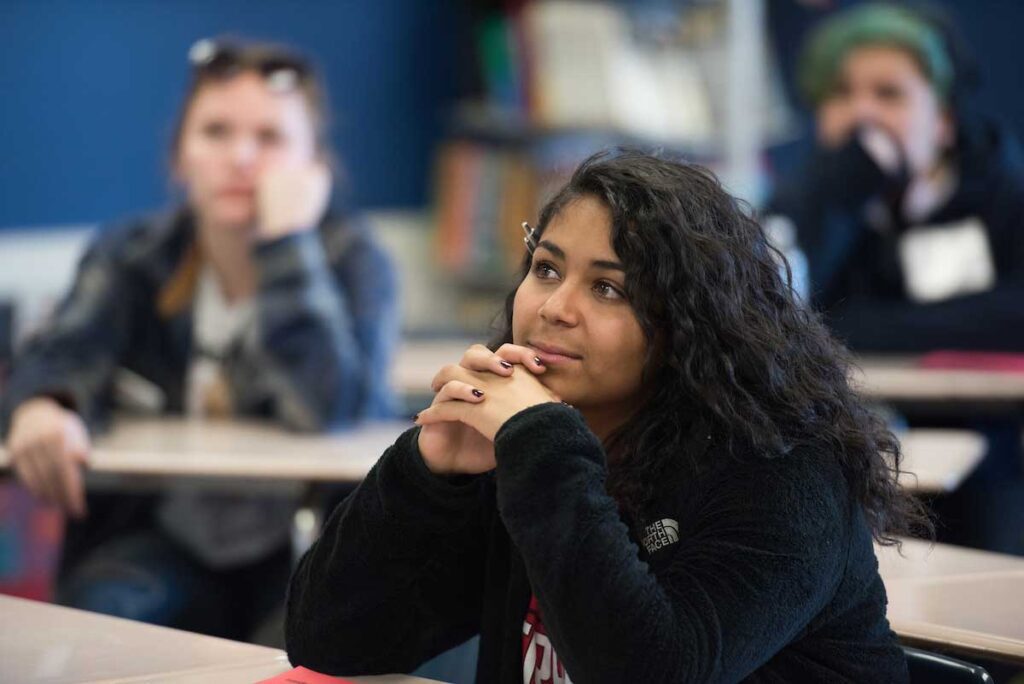We challenge young people to recognize the impact of race and racism on American culture while also envisioning a future without racism.
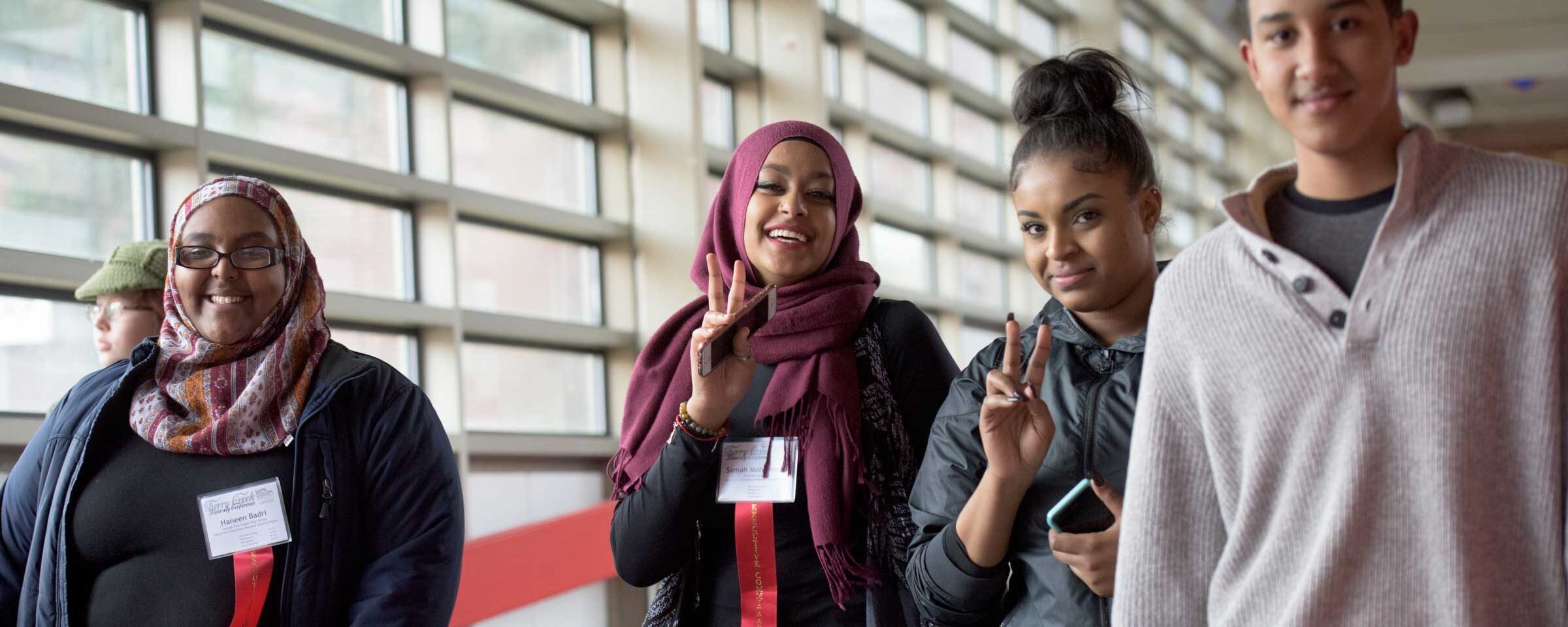
Jump to a section:
Important Racial Justice Terms
First, let’s distinguish between race, ethnicity, and culture (all from Maurianne Adams and Lee Anne Bell):
- Race: a social construct that artificially divides people into distinct groups based on characteristics such as physical appearance (particularly color), ancestral heritage, cultural affiliation, cultural history, ethnic classification, and the social, economic and political needs of a society at a given period of time. Read more about how race is a social construct — and not grounded in science or genetics — here.
- Ethnicity: a social construct that divides people into smaller social groups based on characteristics such as shared sense of group membership, values, behavioral patterns, language, political and economic interests, history and ancestral geographical base. Read more about the difference between race and ethnicity here.
- Culture: a social system of meaning and custom that is developed by a group of people to assure its adaptation and survival. These groups are distinguished by a set of unspoken rules that shape values, beliefs, habits, patterns of thinking, behaviors and styles of communication.
Some additional and important definitions:
- Racism: a prejudice against someone because of their race, backed up by a system of power. (Ijeoma Oluo)
- Colorism: prejudicial or preferential treatment of same-race people based solely on their [shade of skin] color. (Alice Walker)
- Institutional racism: the ways in which policies and practices of institutions (schools, companies, courts, etc.) create different outcomes for different racial groups. The institutional policies may never mention any racial group, but their effect is to create advantages for whites and oppression and disadvantage for people from groups classified as people of color. (Annie E. Casey Foundation)
- Anti-racist: When we choose to be anti-racist, we become actively conscious about race and racism and take actions to end racial inequities in our daily lives. (National Museum of African American History and Culture)
- Racial justice: the systematic fair treatment of people of all races, resulting in equitable opportunities and outcomes for all. Racial justice—or racial equity—goes beyond “anti-racism.” It is not just the absence of discrimination and inequities, but also the presence of deliberate systems and supports to achieve and sustain racial equity through proactive and preventative measures. (Race Forward)
How Racial and Ethnic Injustice Shows Up in Today’s World
- Black students are suspended and expelled three times more than white students. Students suspended or expelled are nearly three times more likely to be in contact with the juvenile justice system the following year. This is one statistic (of many) that points to what is called the “school-to-prison pipeline.” (ACLU)
- Black Americans are incarcerated in state prisons at a rate that is 5.1 times the imprisonment of white Americans. In five states, the disparity is more than 10 to 1. In eleven states, at least 1 in 20 adult Black males is in prison. Latinx Americans are imprisoned at a rate that is 1.4 times the rate of whites. (The Sentencing Project)
- The average white household today has nearly ten times the wealth of a Black household. This is a result of numerous forces, but one of the more significant is redlining policies from the 1930s-60s, when banks would refuse to provide home loans for POC to live in nicer, wealthier neighborhoods. (Marketplace.org)
- Families in urban areas — often families of color — struggle with lower public funding for schools, parks, public transport and more based on local property taxes, while many wealthier white families have moved to the suburbs and started their own cities or school districts. (Center on Budget and Policy Priorities)
- Native/indigenous families have experienced incredible loss of land and wealth as a direct result of policies of the US federal government. Learn more about current ways the U.S. federal government keeps Native people in poverty, especially through the “federal trust doctrine.”
- Native American women are 10 times more likely to be murdered than non-Native women. More than one in three have suffered rape or attempted rape, and more than 80% will experience violence at some point in their lives. (US Department of Justice) These statistics represent just a few aspects of the plight of missing and murdered indigenous women or MMIW.
Racial Justice Leaders Who Inspire Us
Here’s a list of just some of the folks who are leading the conversation on racial justice and anti-racism today, whether locally or nationally. They inspire and inform our work. Follow them on social media, or seek out opportunities to hear them speak to dig deeper on these issues.
YCD Workshops on Racial Justice and Anti-Racism
YCD has a curated library of over 60 workshop guides on every aspect of inclusion and justice work for middle and high school youth to explore in their own youth-led club or group — with new workshops being published every month. These guides can also be used by educators as part of their in-school curriculum, where interested.
Below is a free sample workshop created by YCD on the topic of racial justice, available for anyone to use and download.
Race is a Social Construct
Many think of race as a biological reality, a core characteristic that has implications for things such as athletic ability, intelligence, and temperament. In reality, race is a social construct, a tool for oppression. Race also has a definitive origin story, and one that every anti-racist or social justice activist should know. Join this training to learn a brief history of racial classification in the U.S., and how it influences our mistaken perception of race today.
Other topics available as downloadable workshop guides or offered at YCD conferences/events include:
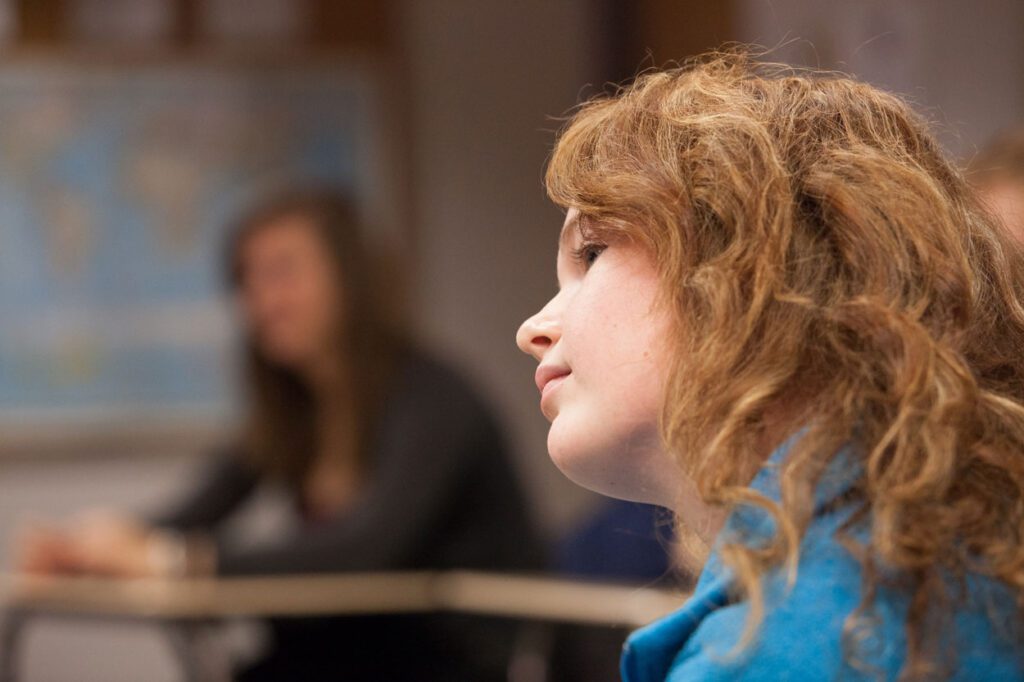
“That’s So Ghetto”: Exploring Race and Gender in Everyday Language
In this interactive workshop we will explore how race, gender, class and sexuality play out in our everyday language and jokes. Does re-thinking our language really matter, or is it just an example of political correctness?
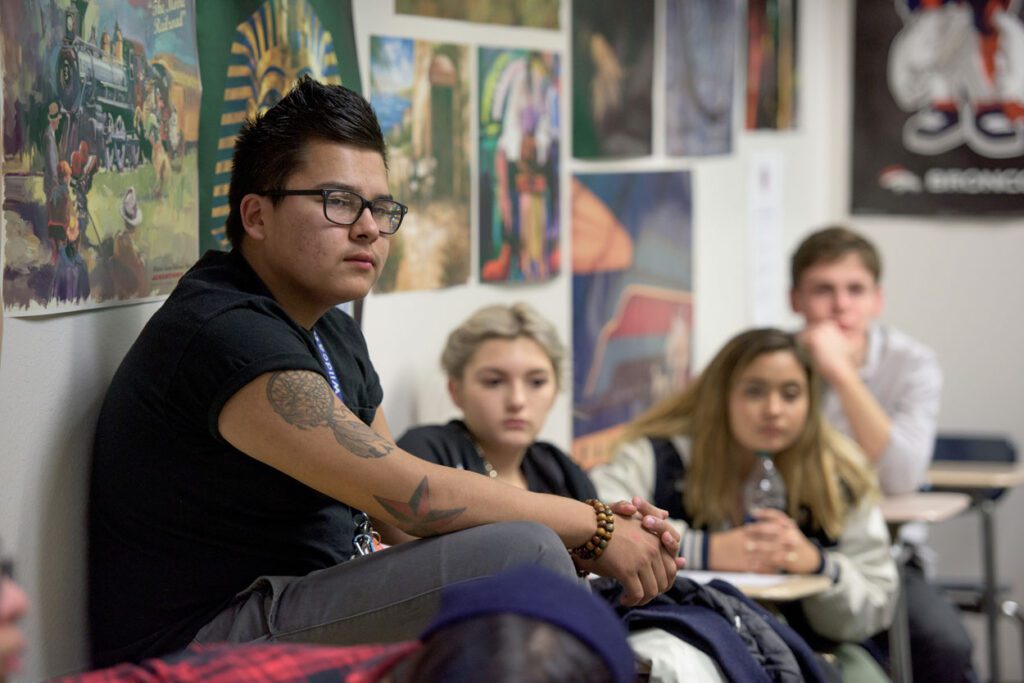
Dispelling Stereotypes of Modern Native Americans
This workshop will help young people meet modern Native American youth, to learn about the diversity within the Native community and dispel stereotypes about Native Americans. We’ll have an open and frank discussion on how these stereotypes have been formed, but more importantly how we can end them.
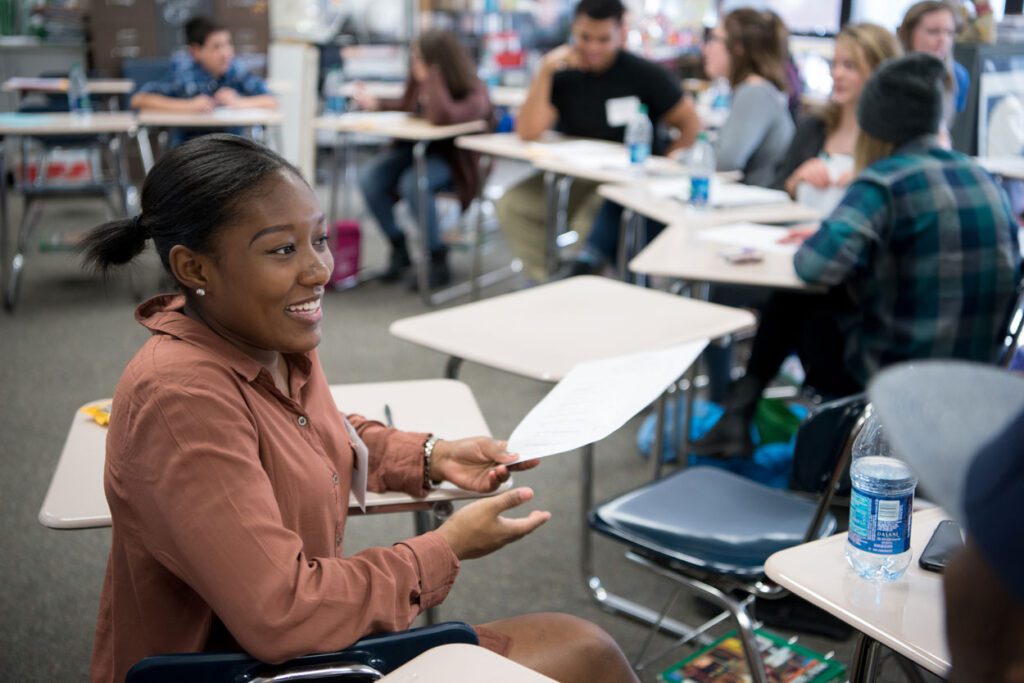
You Mean, There’s RACE in My Movie?
Why is it so difficult to get people to see “eye to eye” on matters of race? Well, in this session, we get our diverse audience to share a common perspective — mainstream movies! Learn specifically how to identify the six primary character patterns occupied by minority characters in mainstream movies and how to use these patterns to leverage more substantive and meaningful dialogues about race at school, home or within the community. You will NEVER see movies the same way again!
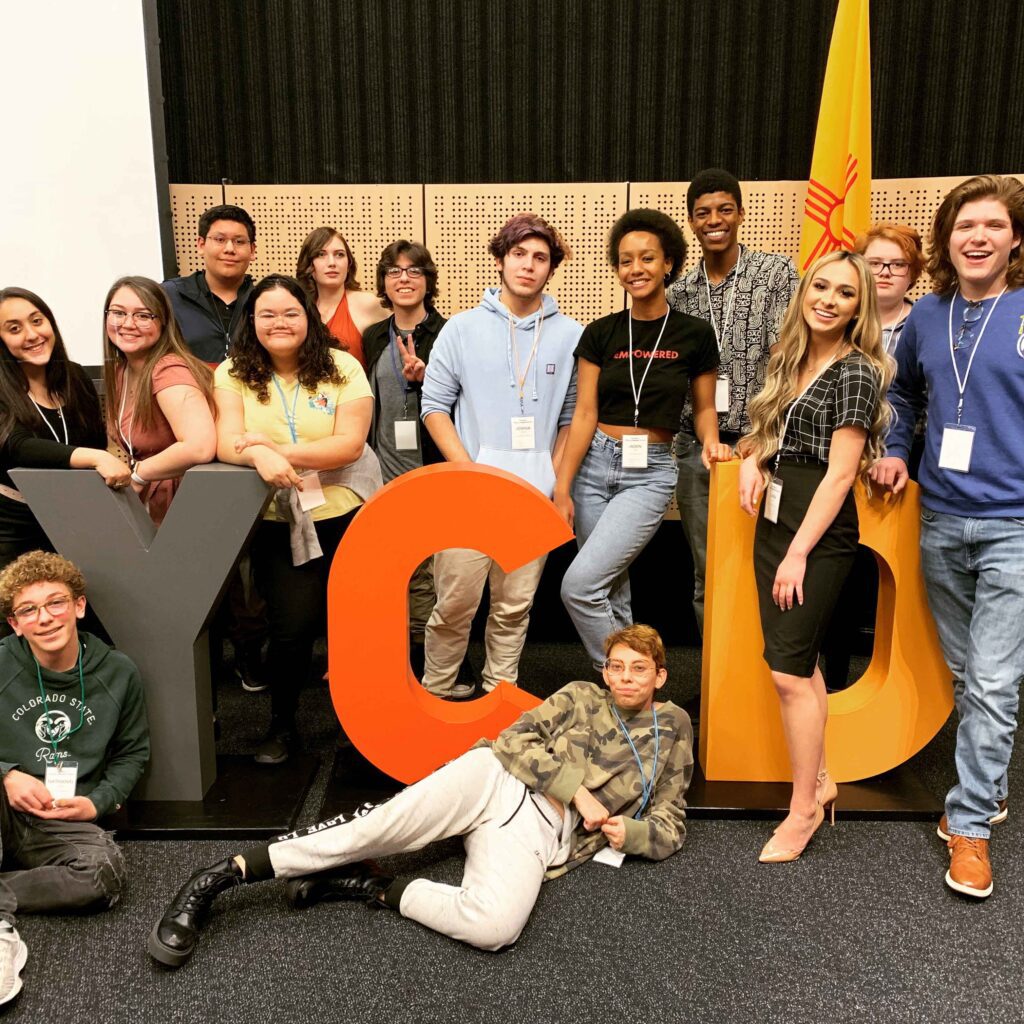
Appropriation and Symbolism: Understanding the Case of the Zia Sun Symbol
In this workshop dive into the world of symbols, meaning, and context from a Pueblo perspective. Start by learning about the history of Native American design appropriation through the case study of the Zia Sun symbol on the New Mexico State flag. Then explore your own understanding and use of symbols in a hands-on activity and group discussion.
To experience these workshops, YCD events, and much more, start or join a YCD chapter!
Videos to Explore Racial Justice and Anti-Racism
Reparations 101
In this webinar we explore the history of Black Americans in this country and the inequities they have faced, and then turn to discuss reparations — or reparative solutions — being offered to address this history of oppression.
Native Youth Activists Speak Out
In this video we hear from Mason Estes, Leala Pourier and Lily Joy Winder about their activism work to advance racial, indigenous and environmental justice, as well as a group conversation about what celebrating Indigenous People’s Day is about, how they spent the day, why it’s important, and why it should be much more than one day.
Teens Talk: Black Lives Matter (part 1)
In this second episode of the podcast Teens Talk, Board members Rediet and Etsub interview two leaders of the Black Lives Matter movement, one in Denver and the other in Albuquerque, about their work for racial justice.
Teens Talk: Black Lives Matter (part 2)
In this third episode of the podcast Teens Talk, Board members Rediet and Etsub continue the conversation about the BLM movement and how it affects teens today.
The Psychology behind Microaggressions
What are microaggressions? What is their impact on people of color, and students of color? How can we focus on healing after suffering from a microaggression? In this video a student interviews psychologist Dr. Mariel Buquè about the psychology of microaggressions.
Cultural Appropriation 101 for Teens
What is “cultural appropriation”? What does it have to do with Halloween? Why is it problematic and how do you know if you’ve done it? Find out more about this topic in this video created by two YCD Student Virtual Board members.
BLM and Intersectionality
What voices and identities are lifted up the most within the BLM movement? What identities are not recognized and respected within the movement? How has awareness of violence toward Black queer and trans lives affected the political environment? How can the Black community be an ally to all identities within BLM?
The School to Prison Pipeline: Student Perspectives
What is the “school to prison pipeline”? How do schools push students of color into the juvenile justice system? What can educators and school administrators do differently to disrupt this injustice?
Colorism: A conversation between students and teachers of color
Why are darker skinned girls THREE TIMES more likely to be suspended from school? Why do darker skinned actors struggle to find work compared to lighter skinned actors, as recently discussed by Viola Davis, Lupita Nyong’o and Thandie Newton? The answer is colorism. Colorism is prejudice against people based on the shade or tone of their skin color, and is also sometimes referred to as shadeism.
Youth Incarceration and Decarceration
In this workshop, Josh Rovner from The Sentencing Project shares information on America’s juvenile justice system, starting from police contact, court processing, and detention all the way through the indefensible process of charging and incarcerating teenagers as if they were adults. The speaker also shares how to advocate for change in your community and the successful reforms that have taken place in communities across the U.S.
Stay up to date for future student-generated videos on this topic and more by subscribing to YCD’s YouTube channel.
Racial Justice Books for Students
Here is a list of recommended books for students and teens that explore and address racial justice issues. You can find free e-books or your local library using OverDrive.com.
Racial Justice Books for Educators and Adults
And this list is for teachers, educators and adults looking for guidance on racial justice within the classroom or school system.
Movies Addressing Racial Justice
Below are movies that address racial justice topics in meaningful and compelling ways.
Podcasts on Racial Justice and Anti-Racism
Here is a list of recommended podcasts you can download and follow to explore racial justice work in more detail.
Ideas for Local Action to Address Racial and Ethnic Justice
Here are just a few ideas of ways students can take action locally to advance racial justice and anti-racism in your school or community:
- Does your school have police officers or SROs on-site? What is their connection to the local police? What are the standards for referring students to the criminal justice system? Student activists across the US are working to remove police from schools, and to sever the connection between schools and the criminal justice system. See https://dignityinschools.org/take-action/counselors-not-cops/ for resources.
- Are students of color represented in advanced classes such as the International Baccalaureate (IB) or Advanced Placement (AP) programs? Are they represented in honors courses? Students and teachers are pushing back on “tracking” within the educational system which so often exclude students of color from accessing higher level courses. Read this article from Learning for Justice about how one school stopped tracking.
- Does your school district carry “lunch debt” charges for students? There is a growing body of student activism to make school lunch free for all, so that all students can eat regardless of ability to pay. Check out Healthy School Meals for All for more information and resources.
- Look into how your school and school district are funded, and how it compares to other nearby districts. Are there disparities along racial lines? Engage school and district leaders to press for change. Here’s an article from NPR on why white-majority districts have so much more money.
- Start a book club, reading one of the suggestions on this page or site, or host a movie night with your family, club or class. Make sure to budget time for a facilitated conversation to digest the book or movie with a properly trained facilitator. YCD provides leadership training for youth on how to facilitate difficult conversations.
Do you have a suggestion of an addition or resource for this page? Share your idea with us.

